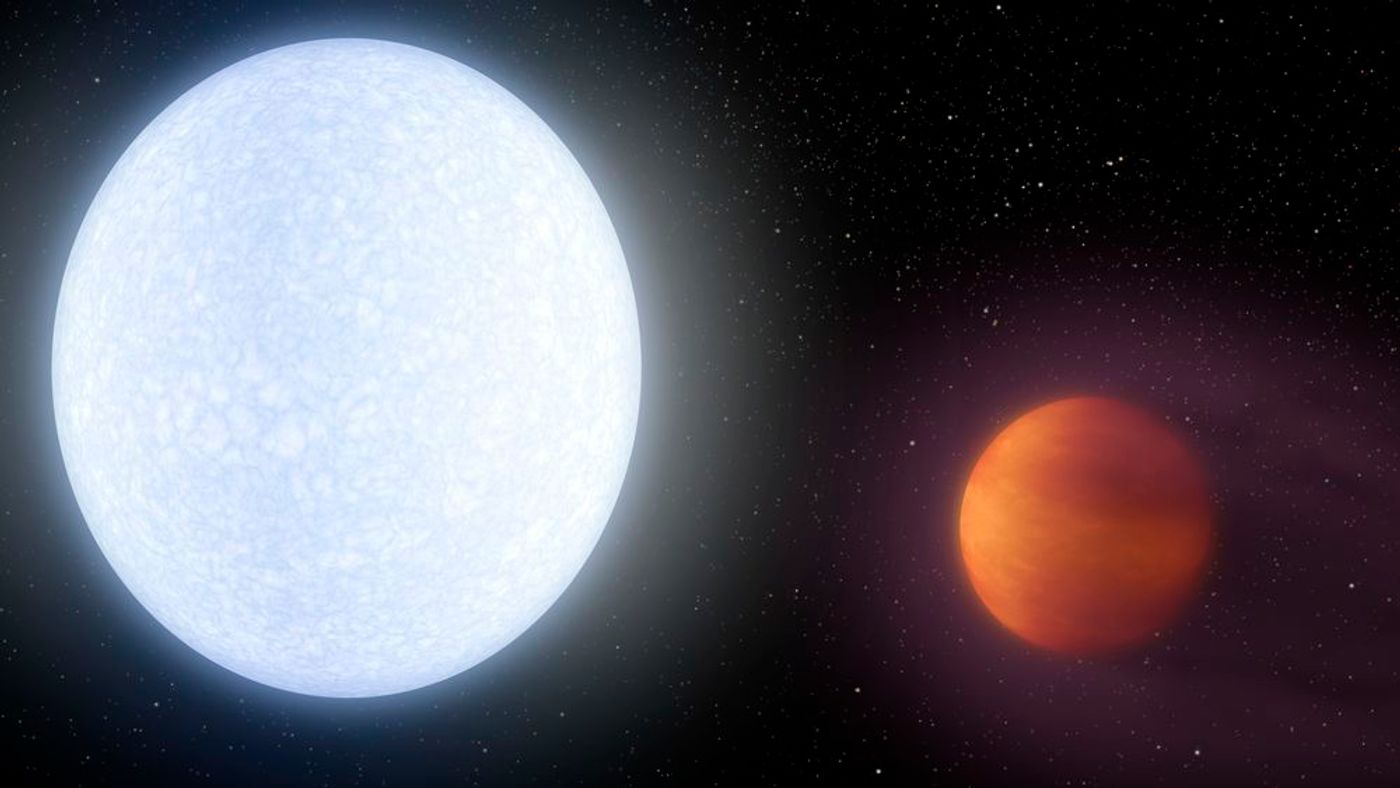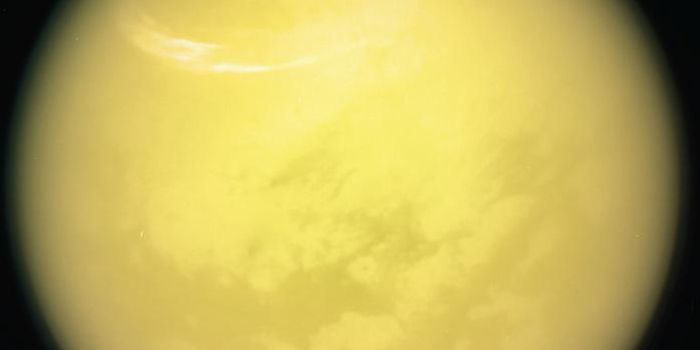Researchers Say This Exoplanet is Hotter Than Most Stars
There’s generally a distinct difference between planetary and stellar temperatures, but one exoplanet some 650 light-years away from Earth that goes by the name of KELT-9b is pushing those boundaries.
KELT-9b is a Jupiter-like gassy exoplanet. On the other hand, it’s three times as massive as Jupiter, but only half as dense. As similar as it might be to Jupiter in many ways, there’s one quality in particular that has astronomers scratching their heads: temperature.
Published journal Nature, researchers from both Ohio State University and Vanderbilt University describe KELT-9b as an exoplanet where the surface temperature on the daytime side reaches well over 7,800º Fahrenheit. To give you an idea of just how hot that really is, the surface of our Sun reaches approximately 9,900º Fahrenheit, and there are many stars out there that are cooler than our Sun.
Image Credit: Robert Hurt/NASA/JPL-Caltech
The massive amount of heat exhibited by KELT-9b led researchers to probe whether or not it was some kind of a failed star, but all evidence points to “no” as the other side of the exoplanet is significantly cooler.
KELT-9b’s daytime side gets as hot as it does because of the way it orbits its host star, KELT-9, so closely. Its orbital path enables the exoplanet to complete an orbit within just two days, and it zips around so quickly that it leaves a heated glowing gas trail behind it, similarly to what a comet exhibits.
KELT-9b is tidally-locked to its host star, which happens to be about twice as large and twice as hot as the Sun. The tidal locking means one side of the planet is always facing KELT-9 and is constantly being bombarded by the intense. With that said, researchers say KELT-9b may one day lose its entire atmosphere to space as it’s essentially boiled away.
“KELT-9 radiates so much ultraviolet radiation that it may completely evaporate the planet. Or, if gas giant planets like KELT-9b possess solid rocky cores as some theories suggest, the planet may be boiled down to a barren rock, like Mercury,” said Keivan Staussan, Professor of Physics and Astronomy at Vanderbilt, and a co-author of the study.
Related: Exoplanets orbiting red dwarf stars are unlikely to support life
The researchers also note that perhaps the reason behind the odd mass/density ratio exhibited by KELT-9b is because of how the heat from the host star is “puffing up” its atmosphere.
Studying KELT-9b could help us to learn more about the physics behind gas giants in other stellar systems. A lot of unanswered questions remain, such as how it got into its strange orbit, but we can do nothing more than theorize at this point in time.
For those interested, an artist’s impression of KELT-9b and its orbit al path around KELT-9 is illustrated in the video below:
It should be interesting to see if other studies can pick up where this one left off to learn more about the system.
Source: Vanderbilt University via BBC









